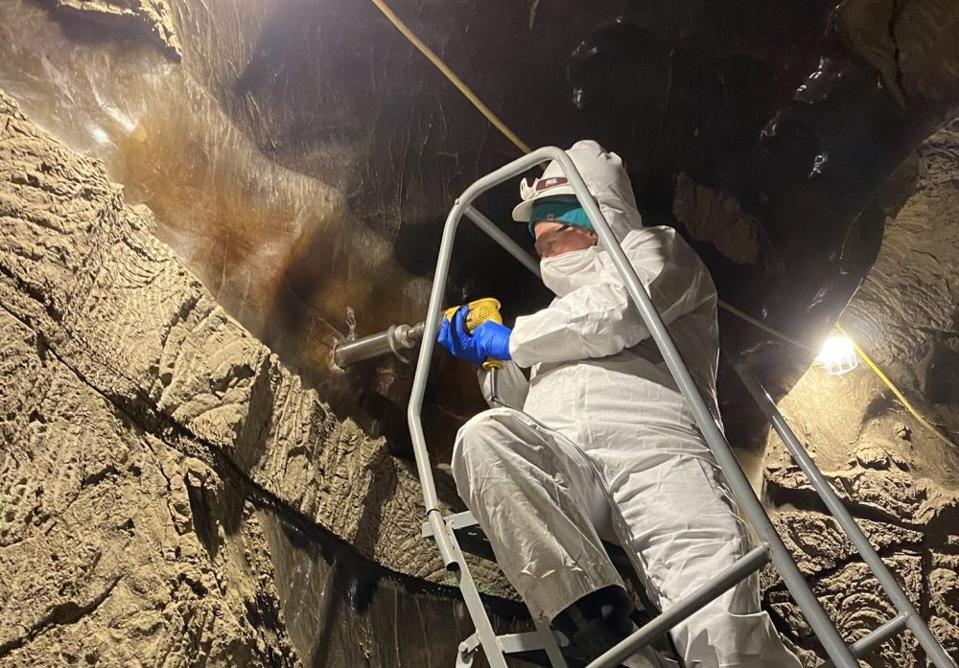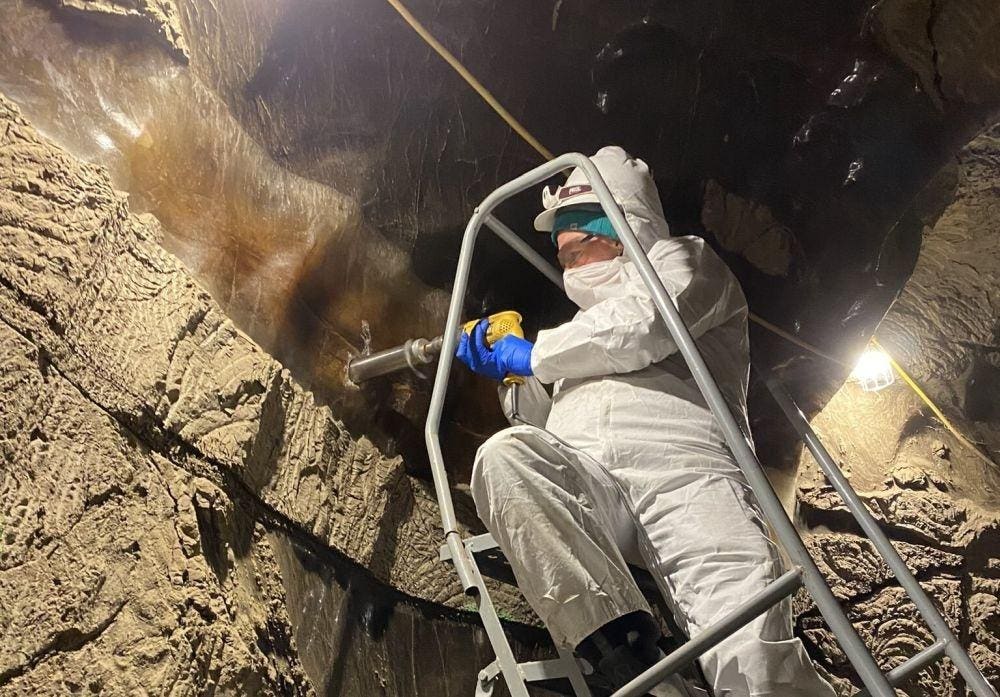
XXX
Tristan Caro/University of Colorado at Boulder
In a new study, a team of geologists and biologists led by the University of Colorado at Boulder resurrected ancient microbes that had been trapped in ice — in some cases for around 40,000 years.
The researchers traveled to Fox, Alaska, where the U.S. Army Corps maintains a a 350 feet deep tunnel to study engineering problems associated with permafrost — a frozen mix of organic debris, ice and rocks that underlies nearly a quarter of the land in the northern hemisphere.
They collected samples of permafrost that was a few thousand to tens of thousands of years old from the walls of the tunnel. They then added water and incubated them at temperatures of 39 and 54 degrees Fahrenheit, far above the mean temperature of permafrost hoovering around 14 degrees Fahrenheit.
The microbes preserved in the organic debris will take a while to become active. At first, these colonies grew at a creep, in some cases replacing only about one in every 100,000 cells per day. But after a few months, like waking up after a long nap, they begin to form flourishing colonies.
“These are not dead samples by any means,” says geobiologist Tristan Caro, lead author of the study and a former graduate student in geological sciences at CU Boulder.
This discovery has wide implications for the health of the Arctic, and the entire planet, adds study co-author Sebastian Kopf. As the microbes become active, they start to break down organic matter, releasing carbon dioxide in the process. Carbon dioxide is a greenhouse gas, accelerating global warming.
The researchers added there are still a lot of open questions, such as whether ancient organisms will behave the same way in the field as under ideal laboratory conditions.
“We know very little about viruses and microbes in these extreme environments, and what is actually there,” explains Lonnie Thompson, a glaciologist unaffiliated with the new study who has published extensively on bacteria preserved in glaciers. “The documentation and understanding of that is extremely important: How do bacteria and viruses respond to climate change?”
In the worst-case scenario, melting ice could release potentially infectious pathogens into the environment. In 2015, a study showed that the 30,000-year-old virus Mollivirus sibericum could still infect modern amoeba. Intact smallpox and Spanish flu viruses were found in 100-year-old frozen tissue samples. An outbreak of anthrax in Siberia ten years ago is believed to be the result of the pathogen preserved in reindeer carcasses. Frozen for decades, the bodies thawed out of the ground during an exceptional heatwave, releasing the still infectious anthrax spores.
The full study, “Microbial Resuscitation and Growth Rates in Deep Permafrost: Lipid Stable Isotope Probing Results From the Permafrost Research Tunnel in Fox, Alaska,” was published in the Journal of Geophysical Research: Geosciences and can be found online here.
Additional material and interviews provided by Daniel Strain, CU Boulder.
